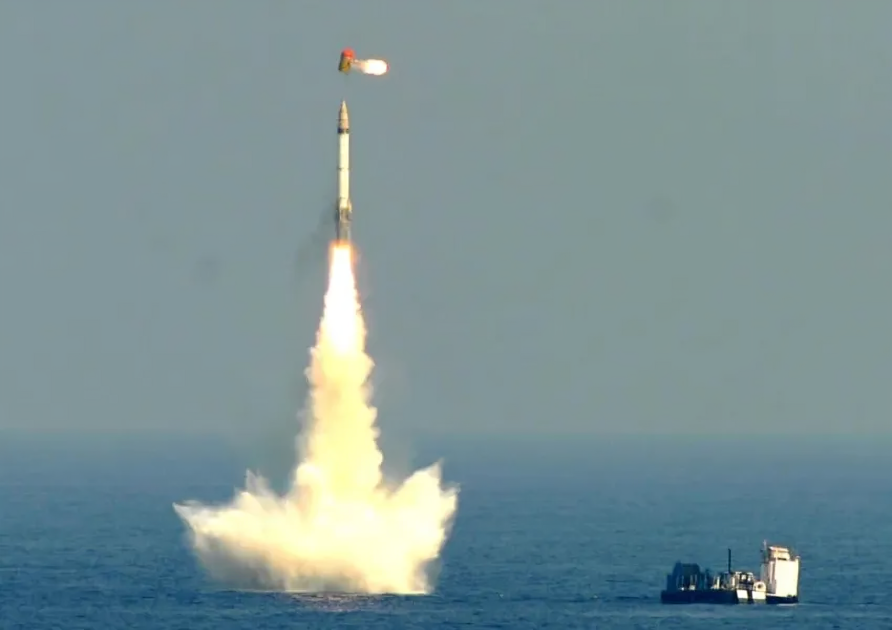
- The successful test of the K-4 SLBM from a nuclear-powered submarine INS Arighaat is a major milestone in India’s quest for a credible second-strike capability.
- This test is considered very important as it showcases India’s preparedness to guard its national security and maritime interests as well.
- The K-4 was developed indigenously by the DRDO, showcasing India’s technological prowess and reducing the dependence on foreign defence systems.
India recently tested its K-4 SLBM from a nuclear-powered submarine INS Arighaat, which is the most important development in demonstrating its strategic weapons capabilities. This test is the major milestone in India’s quest for a credible second-strike capability. India’s nuclear triad has become much stronger as it can deliver nuclear capability both from land and from sea, besides air.
The K-4 missile would have a range exceeding 3,500 kilometres, meaning that it can attack deep within an enemy country. This is to be launched underwater and designed for such a condition, and this will provide India’s nuclear force a good survival chance when hit first by adversaries. As such, the strength in payload and accuracy stands in its favour as being added to the Indian strategic inventory.
This test reiterates India’s commitment to a robust deterrence posture despite the evolving regional threats. With IOR turning out to be an important theatre of geopolitical rivalry, its importance is growing for the rise in naval presence by other nations. That is why this test was considered important by showcasing India’s preparedness to guard its national security and maritime interests as well.
The missile test comes at a time when security challenges to India come at it from multiple fronts. The test therefore becomes a message of strategic preparedness but also a fitting component of credible minimum deterrence that has defined India’s nuclear policy thus far. India’s defence community has lauded the achievement, viewing it as a step toward self-reliance in defence technology.
The K-4 was developed indigenously by the Defence Research and Development Organisation (DRDO), showcasing India’s technological prowess. The success of such projects reduces dependence on foreign defence systems, aligning with the broader “Make in India” initiative. This can create reactions in China and Pakistan that might view it as escalatory in nature. In that way, the focus on India for a second-strike capability brings a defence hue to the colour of preservation for peace through deterrence.
In conclusion, successful K-4 missile tests are a landmark achievement by India in its defence strategies. Enhancing underwater striking capabilities not only reinforces its nuclear deterrence but places India at the forefront of its position in the regional security landscape.
Saisha is pursuing a Bachelor of Diplomacy and Foreign Policy at the JISA, O.P. Jindal Global University. Her areas of interest include economics, business, diaspora studies, and diplomacy. Views expressed are the author’s own.
